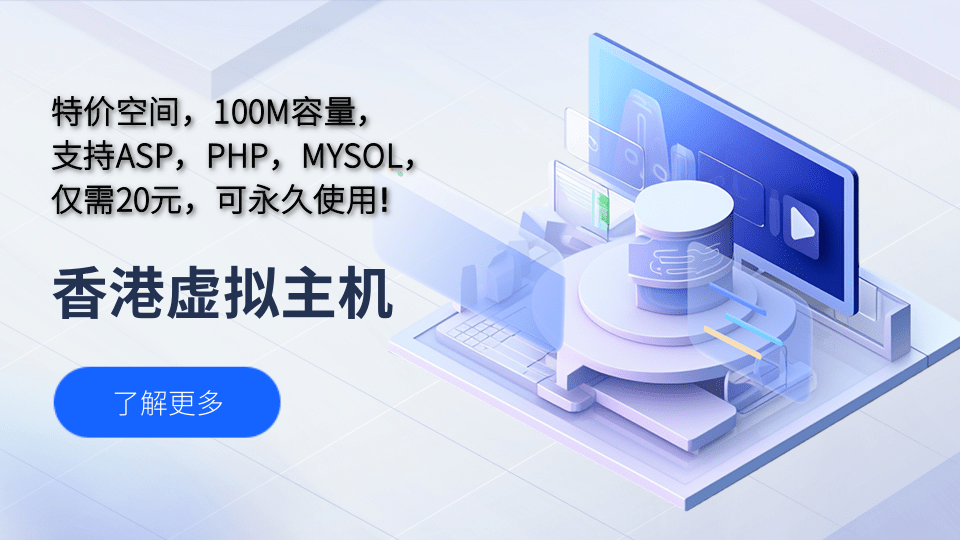在golang中使用graphql时,n+1查询问题通常由不恰当的数据获取方式引起,导致数据库多次重复查询,降低性能。解决方案包括:1. 使用dataloader:通过延迟加载和批量处理合并请求,减少数据库查询次数;2. 手动实现批量查询:在解析关联数据前收集所有id,一次性获取数据;3. 使用orm框架的预加载功能:如gorm的preload方法,在查询主对象时同时加载关联对象。选择方案时,简单项目可选手动批量查询,复杂项目推荐dataloader或orm预加载。dataloader具备缓存机制,针对单个请求独立缓存,避免重复查询;对于大量id的批量查询,可分批次执行以避免超出数据库限制。此外,可通过apm工具或自定义指标监控n+1问题,及时优化性能。这些方法有效解决n+1问题,提升graphql查询效率。

golang中使用GraphQL时,N+1查询问题通常指的是在解析GraphQL查询时,由于不恰当的数据获取方式,导致对数据库进行了过多的查询,从而降低性能。核心在于,GraphQL的灵活性可能导致在解析关联数据时,没有有效地利用批量查询。

解决方案:

-
使用DataLoader: DataLoader是解决GraphQL N+1问题的经典方案。它通过将同一批次的请求合并成一个批量请求,减少数据库查询次数。DataLoader的核心思想是延迟加载和批量处理。
立即学习“go语言免费学习笔记(深入)”;

- 延迟加载: 当GraphQL解析器需要某个字段的数据时,DataLoader不是立即去数据库查询,而是将这个请求收集起来。
- 批量处理: 当收集到一批请求后,DataLoader会将这些请求合并成一个批量查询,一次性从数据库获取所有需要的数据。
package main import ( "context" "fmt" "log" "net/http" "strconv" "time" "github.com/graph-gophers/dataloader/v7" "github.com/graphql-go/graphql" "github.com/graphql-go/handler" ) // User represents a user in the system. type User struct { ID int Name string } // Post represents a post in the system. type Post struct { ID int Title string UserID int } // Mock database. var ( users = []*User{ {ID: 1, Name: "Alice"}, {ID: 2, Name: "Bob"}, } posts = []*Post{ {ID: 1, Title: "Alice's first post", UserID: 1}, {ID: 2, Title: "Bob's first post", UserID: 2}, {ID: 3, Title: "Alice's second post", UserID: 1}, } ) // Batch function for loading users. func userBatchFn(ctx context.Context, keys []string) []*dataloader.Result[*User] { log.Printf("Fetching users with keys: %v", keys) userIDs := make([]int, len(keys)) for i, key := range keys { id, _ := strconv.Atoi(key) // Ignoring error for simplicity userIDs[i] = id } // Simulate database query. userMap := make(map[int]*User) for _, user := range users { for _, id := range userIDs { if user.ID == id { userMap[id] = user break } } } results := make([]*dataloader.Result[*User], len(keys)) for i, key := range keys { id, _ := strconv.Atoi(key) user, ok := userMap[id] if ok { results[i] = &dataloader.Result[*User]{Data: user, Error: nil} } else { results[i] = &dataloader.Result[*User]{Data: nil, Error: fmt.Errorf("user not found: %s", key)} } } return results } // Create a new DataLoader for users. func newUserLoader() *dataloader.Loader[string, *User] { return dataloader.NewLoader( dataloader.BatchFunc[*User](userBatchFn), dataloader.WithWait(1*time.Millisecond), // Adjust wait time as needed ) } func main() { // Define GraphQL schema. userType := graphql.NewObject(graphql.ObjectConfig{ Name: "User", Fields: graphql.Fields{ "id": &graphql.Field{ Type: graphql.Int, }, "name": &graphql.Field{ Type: graphql.String, }, }, }) postType := graphql.NewObject(graphql.ObjectConfig{ Name: "Post", Fields: graphql.Fields{ "id": &graphql.Field{ Type: graphql.Int, }, "title": &graphql.Field{ Type: graphql.String, }, "author": &graphql.Field{ Type: userType, Resolve: func(p graphql.ResolveParams) (interface{}, error) { // Access DataLoader from context. ctx := p.Context loaders := ctx.Value("loaders").(map[string]*dataloader.Loader[string, *User]) userLoader := loaders["userLoader"] post, ok := p.Source.(*Post) if !ok { return nil, fmt.Errorf("source is not a Post") } // Load user by ID using DataLoader. thunk := userLoader.Load(ctx, strconv.Itoa(post.UserID)) user, err := thunk() if err != nil { return nil, err } return user, nil }, }, }, }) queryType := graphql.NewObject(graphql.ObjectConfig{ Name: "Query", Fields: graphql.Fields{ "posts": &graphql.Field{ Type: graphql.NewList(postType), Resolve: func(p graphql.ResolveParams) (interface{}, error) { return posts, nil }, }, }, }) schema, err := graphql.NewSchema(graphql.SchemaConfig{ Query: queryType, }) if err != nil { log.Fatalf("failed to create schema: %v", err) } // Create a GraphQL handler. h := handler.New(&handler.Config{ Schema: &schema, Pretty: true, GraphiQL: true, }) // Middleware to inject DataLoader into context. middleware := func(next http.Handler) http.Handler { return http.HandlerFunc(func(w http.ResponseWriter, r *http.Request) { ctx := r.Context() loaders := map[string]*dataloader.Loader[string, *User]{ "userLoader": newUserLoader(), } ctx = context.WithValue(ctx, "loaders", loaders) next.ServeHTTP(w, r.WithContext(ctx)) }) } // Start the server. http.Handle("/graphql", middleware(h)) log.Println("Server is running on port 8080") log.Fatal(http.ListenAndServe(":8080", nil)) }
-
批量查询: 手动实现批量查询,避免每次都查询数据库。在解析关联数据时,先收集所有需要查询的ID,然后一次性从数据库获取所有数据。
// 假设你需要查询文章的作者信息 func resolvePosts(ctx context.Context) ([]*Post, error) { posts := []*Post{ /* ... */ } // 从数据库获取文章列表 authorIDs := []int{} for _, post := range posts { authorIDs = append(authorIDs, post.AuthorID) } // 去重 authorIDs uniqueAuthorIDs := uniqueIntSlice(authorIDs) // 一次性从数据库获取所有作者信息 authors, err := fetchAuthorsByID(ctx, uniqueAuthorIDs) if err != nil { return nil, err } authorMap := make(map[int]*Author) for _, author := range authors { authorMap[author.ID] = author } // 将作者信息关联到文章 for _, post := range posts { post.Author = authorMap[post.AuthorID] } return posts, nil } func uniqueIntSlice(slice []int) []int { keys := make(map[int]bool) list := []int{} for _, entry := range slice { if _, value := keys[entry], keys[entry]; !value { keys[entry] = true list = append(list, entry) } } return list } -
使用ORM框架的预加载功能: 如果你使用ORM框架(例如GORM),通常会提供预加载(Eager Loading)功能,可以在查询主对象时,同时加载关联对象,减少数据库查询次数。
// 使用GORM预加载关联数据 db.Preload("Author").Find(&posts) // 一次性查询所有文章和对应的作者
如何选择合适的解决方案?
选择哪种方案取决于你的项目规模和复杂度。对于简单的项目,手动实现批量查询可能就足够了。对于复杂的项目,使用DataLoader或ORM框架的预加载功能可以更方便地解决N+1问题。DataLoader的优势在于它更加灵活,可以处理各种复杂的关联关系。ORM框架的预加载功能则更加简单易用,但可能不够灵活。
DataLoader的缓存机制如何工作?
DataLoader内部维护了一个缓存,用于存储已经加载过的数据。当DataLoader再次需要加载相同的数据时,会直接从缓存中获取,避免重复查询数据库。缓存的Key通常是数据的ID。DataLoader的缓存是针对单个请求的,也就是说,每个请求都会创建一个新的DataLoader实例,拥有独立的缓存。
批量查询如何处理大量ID?
如果需要批量查询的ID数量非常大,可能会超过数据库的限制。在这种情况下,可以将ID分成多个批次,分批查询数据库。
func fetchAuthorsByID(ctx context.Context, ids []int) ([]*Author, error) { const batchSize = 100 // 设置批次大小 var authors []*Author for i := 0; i < len(ids); i += batchSize { end := i + batchSize if end > len(ids) { end = len(ids) } batchIDs := ids[i:end] batchAuthors, err := fetchAuthorsByIDBatch(ctx, batchIDs) // 实际的数据库查询函数 if err != nil { return nil, err } authors = append(authors, batchAuthors...) } return authors, nil }
如何监控GraphQL N+1问题?
监控GraphQL N+1问题可以帮助你及时发现和解决性能问题。可以使用APM工具(例如New Relic、Datadog)来监控GraphQL查询的性能,包括查询次数、查询时间等指标。还可以自定义监控指标,例如记录每个GraphQL查询实际执行的数据库查询次数。



















